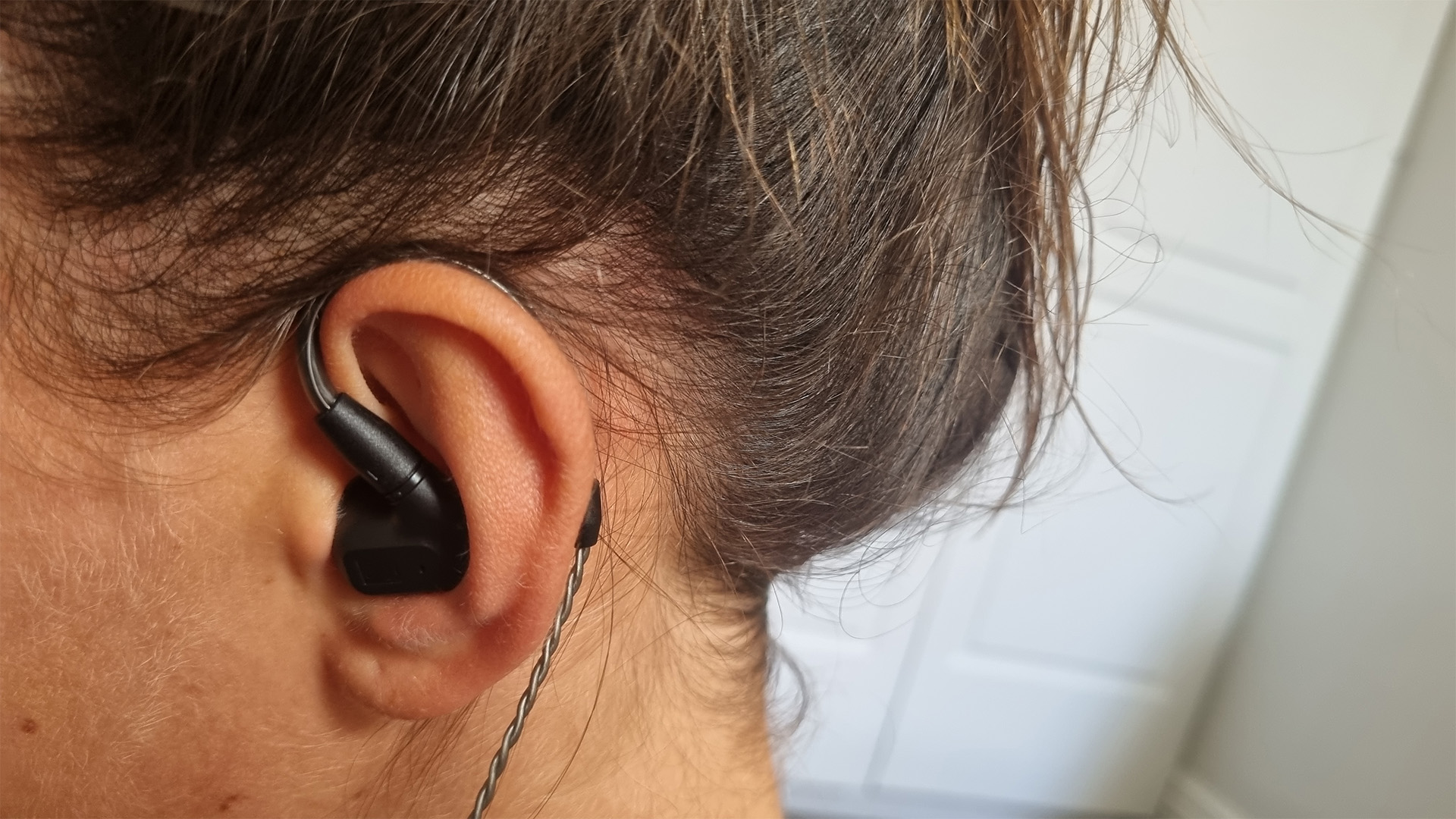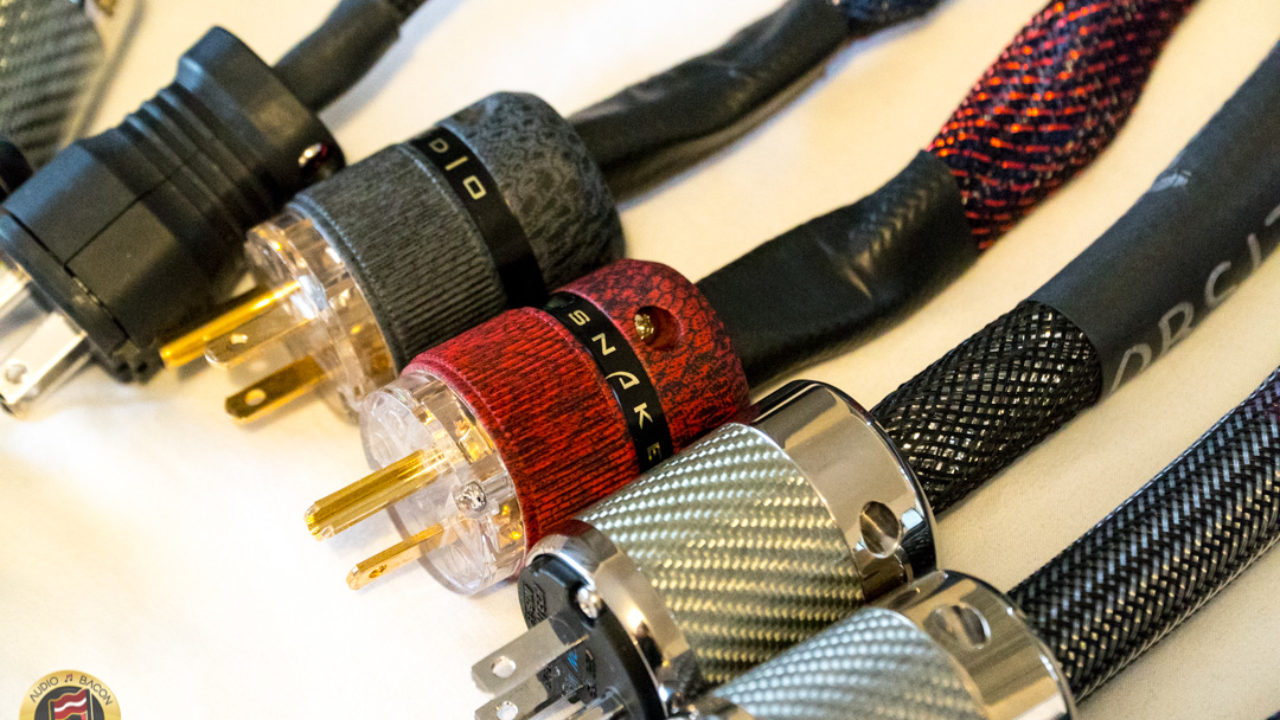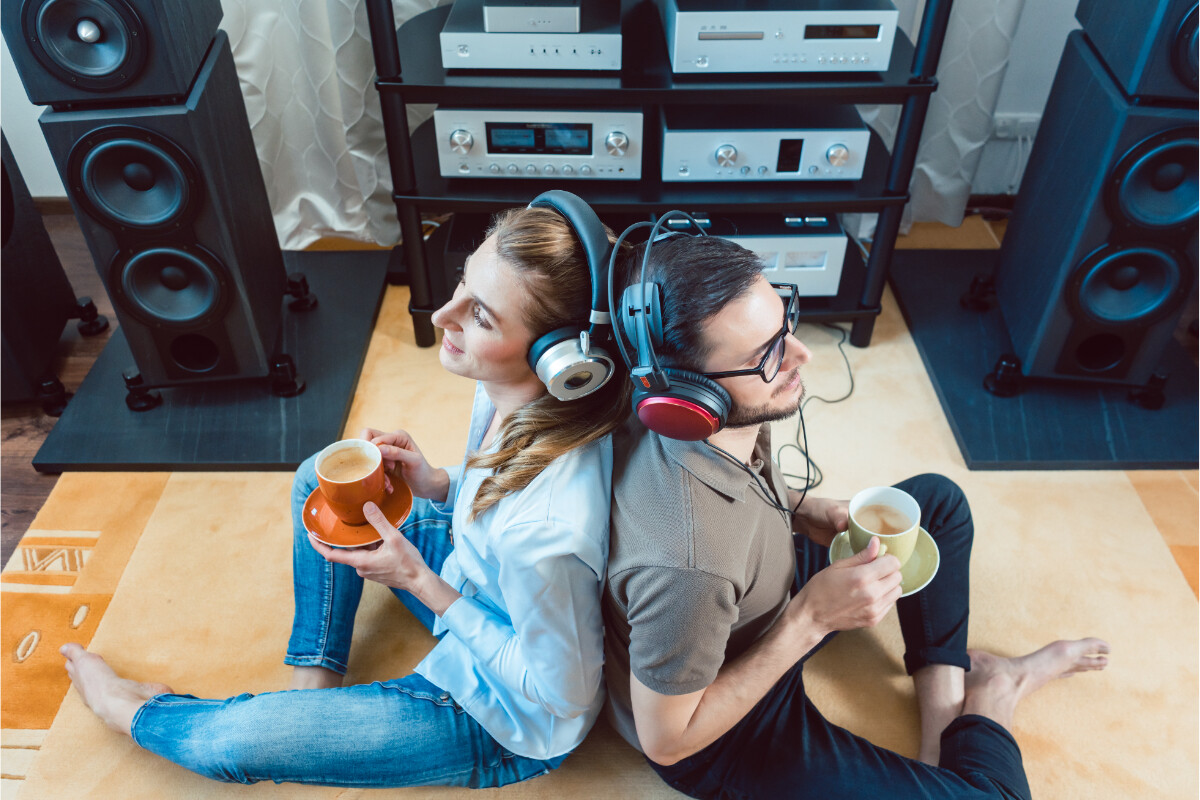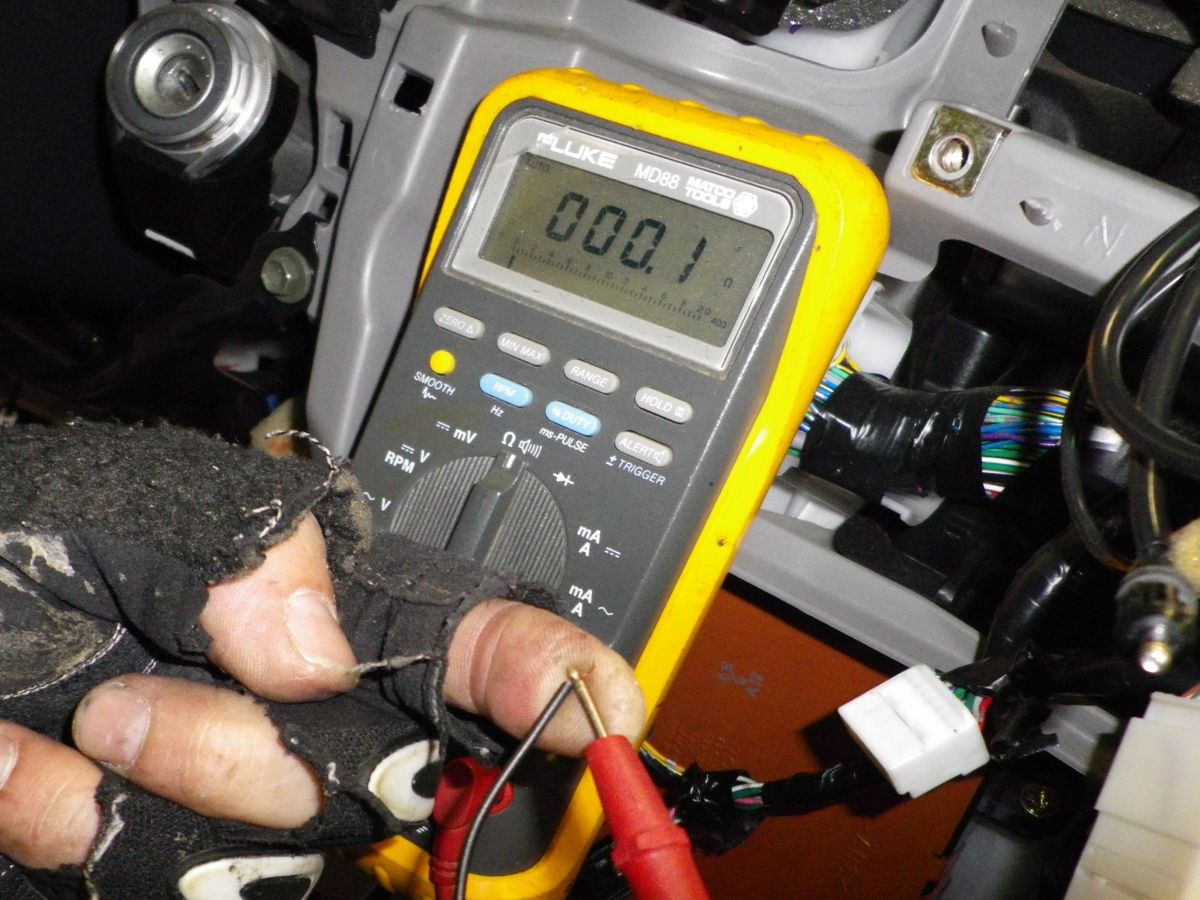Home>Production & Technology>Audiophile>How Good Are Your Ears Audiophile Test


Audiophile
How Good Are Your Ears Audiophile Test
Modified: February 15, 2024
Test the quality of your audiophile ears with our audio test. Don't miss out on this opportunity to challenge your musical perception.
(Many of the links in this article redirect to a specific reviewed product. Your purchase of these products through affiliate links helps to generate commission for AudioLover.com, at no extra cost. Learn more)
Table of Contents
- Introduction
- Background of Audiophile Tests
- Importance of Testing Ear Quality
- Overview of the Audiophile Test
- Test 1: Frequency Range Detection
- Test 2: Stereo Separation Perception
- Test 3: Dynamic Range Perception
- Test 4: Distortion Perception
- Test 5: Soundstage Perception
- Test 6: Instrument Separation and Localization
- Conclusion
Introduction
Have you ever wondered how good your ears are when it comes to discerning the finest nuances of sound? If you consider yourself an audiophile, then you are likely no stranger to the pursuit of exceptional sound quality. Audiophiles, those who are passionate about high-fidelity audio reproduction, often invest in top-of-the-line equipment and meticulously curate their music collection to achieve the ultimate listening experience.
But what about the ears themselves? How well can they perceive the subtleties and complexities of sound? That’s where audiophile tests come into play. These tests are designed to assess the quality and acuity of one’s hearing, allowing individuals to gain insight into their ear’s ability to discern fine details in sound reproduction.
Understanding the results of these tests can help audiophiles tailor their listening setups to their specific needs and preferences. By identifying any potential limitations or strengths in their hearing, they can make informed decisions about equipment upgrades, audio formats, and room acoustics.
In this article, we will delve into the world of audiophile tests, exploring their importance and providing an overview of the various tests available. Whether you are a seasoned audiophile or simply curious about the capabilities of your own ears, this article will guide you through the process of assessing your ear’s quality and acuity.
Background of Audiophile Tests
Audiophile tests have been around for decades, evolving alongside advancements in audio technology. Originally, these tests were primarily conducted by audio engineers and professionals to evaluate audio equipment and ensure optimal sound reproduction. However, over time, the interest in audiophile-grade sound quality has extended to enthusiasts and consumers looking to enhance their listening experiences.
One of the earliest forms of audiophile testing is the blind A/B test, where listeners are presented with two different audio sources and asked to determine which one provides a superior listening experience. This test helps identify differences in audio quality between different audio formats, equipment, or settings.
As technology advanced, more sophisticated tests were developed. These tests focused on assessing specific aspects of audio perception, such as frequency range detection, stereo image separation, dynamic range perception, distortion perception, soundstage perception, and instrument separation and localization.
Traditionally, audiophile tests were conducted in controlled environments, such as professional recording studios or listening rooms with specialized equipment. However, with the rise of digital audio and online platforms, many audiophile tests can now be conveniently accessed and taken from the comfort of one’s own home.
It is important to note that while audiophile tests provide valuable insights into one’s ear’s abilities, they should not be considered as definitive measures of a person’s overall hearing health. Audiophile tests primarily focus on the perception of sound quality and nuances, rather than on detecting hearing impairments or medical conditions.
Despite this limitation, audiophile tests have gained popularity among music enthusiasts and professionals alike. The results can serve as a benchmark for those seeking to achieve the highest level of audio fidelity in their listening setups, offering a unique opportunity to fine-tune their equipment and preferences.
Importance of Testing Ear Quality
Testing ear quality through audiophile tests is crucial for several reasons. Firstly, it allows individuals to understand the limitations and capabilities of their own hearing. By identifying any areas of weakness or sensitivity, listeners can make informed decisions about how to optimize their audio setup to compensate for these factors.
Furthermore, testing ear quality provides a benchmark for evaluating the effectiveness of audio equipment, software, and formats. Audiophile tests can help determine if a particular piece of equipment or audio format is delivering the intended audio quality and fidelity. This information is invaluable for audiophiles who aim to create an immersive and true-to-life listening experience.
Another benefit of testing ear quality is the potential for personal growth and education. By actively engaging with audiophile tests, individuals can develop their auditory perception and train their ears to detect finer nuances in sound. Constant exposure to high-quality audio through tests can refine and enhance one’s ear’s ability to distinguish between different elements of a musical performance.
Moreover, understanding your ear’s quality can also help in the selection and positioning of audio equipment. By knowing the strengths and weaknesses of your hearing, you can match your ear’s capabilities with the right type of speakers, headphones, or amplifiers. This ensures that the audio reproduction is optimized to complement your ear’s preferences and characteristics.
Lastly, testing ear quality can be a fun and interactive experience for enthusiasts. It provides an opportunity to challenge oneself and compare your listening abilities with others in the audiophile community. It can also serve as a starting point for discussions and collaborations, allowing participants to share tips, techniques, and recommendations to improve the overall audio experience.
In summary, testing ear quality is important because it empowers individuals to understand their auditory capabilities, optimize their audio setup, evaluate equipment performance, enhance their listening skills, and engage with the audiophile community. It’s a journey of discovery and refinement that can ultimately lead to a more immersive and satisfying audio experience.
Overview of the Audiophile Test
The audiophile test is a comprehensive evaluation of one’s auditory perception and ability to discern various aspects of sound reproduction. It consists of a series of assessments designed to test different elements of audio quality and perception. Each test focuses on a specific aspect of the audio experience, offering valuable insights into the capabilities of one’s ears. Let’s explore some of the common tests found in an audiophile evaluation:
- Frequency Range Detection: This test assesses the listener’s ability to detect and differentiate between different frequencies. It helps identify any limitations in the perception of high or low frequencies, which can affect the overall audio experience.
- Stereo Separation Perception: In this test, participants listen to audio tracks that feature sound elements placed at specific positions in the stereo field. The objective is to determine how accurately the listener can perceive the placement of these sound sources and the depth of the stereo image.
- Dynamic Range Perception: The dynamic range test evaluates the listener’s ability to detect subtle variations in volume or intensity within a piece of music. It measures how well the ears can perceive the range between the softest and loudest sounds in a recording.
- Distortion Perception: This test helps identify the listener’s sensitivity to distortion in audio reproduction. It involves playing audio tracks with varying levels of distortion and assessing the ability to detect and determine the degree of distortion present.
- Soundstage Perception: The soundstage perception test examines the listener’s perception of the spatial positioning and dimensionality of sound. It assesses how effectively the ears can recreate a three-dimensional sound image and the sense of space in a recording.
- Instrument Separation and Localization: This test evaluates the listener’s ability to distinguish and locate individual instruments within a musical performance. Participants must identify and determine the precise position of each instrument in the soundstage.
It is important to note that the specific tests included in an audiophile evaluation can vary. Some tests may focus more on technical aspects, while others may prioritize subjective listening experiences. Additionally, audiophile tests can be conducted through specialized software, online platforms, or even with the assistance of a trained audio professional.
By participating in these tests, individuals gain a deeper understanding of their own auditory capabilities, allowing them to make informed decisions about audio equipment, settings, and preferences. They also provide a fascinating opportunity to explore the intricacies of sound reproduction and the remarkable abilities of the human ear.
Test 1: Frequency Range Detection
Frequency range detection is one of the fundamental tests in an audiophile evaluation. It assesses the listener’s ability to perceive and differentiate between different frequencies in the sound spectrum. This test plays an essential role in understanding the balance and accuracy of one’s hearing.
In this test, participants are typically presented with a series of tones that range from low to high frequencies. The objective is to identify and distinguish between the various frequencies being played. The tones may be presented in a random order or as ascending or descending sequences.
The ability to detect high frequencies is crucial for perceiving intricate details, such as cymbals and vocal sibilance, in a music track. On the other hand, the ability to perceive low frequencies is vital for capturing the deep rumble of a bass guitar or the thundering impact of a kick drum.
During the frequency range detection test, individuals may discover that they have a greater sensitivity in a specific frequency range. For example, some may excel at discerning high frequencies, while others may excel at perceiving low frequencies. These findings can help guide equipment choices, such as selecting headphones or speakers that emphasize the preferred frequency range.
Moreover, the frequency range detection test can also shed light on any potential hearing loss or deficiencies in certain frequency ranges. It can identify if there are any dips or peaks in the listener’s hearing sensitivity curve, which may require compensation through equalization or other corrective measures.
Overall, the frequency range detection test provides valuable insights into the listener’s ability to detect and distinguish between different frequencies in the audio spectrum. By understanding the strengths and weaknesses in this aspect of their hearing, individuals can tailor their audio systems and preferences to optimize their listening experience.
Test 2: Stereo Separation Perception
The stereo separation perception test focuses on assessing the listener’s ability to perceive the placement and separation of sound sources within the stereo field. It plays a crucial role in determining how accurately one can experience the intended spatial representation of audio recordings.
In this test, participants are presented with audio tracks that feature sound elements positioned at various locations within the stereo image. The aim is to accurately identify and differentiate the placement of these sound sources, which can be panned left, right, or centered.
By discerning the stereo separation, individuals can experience a more immersive and realistic listening experience. They can appreciate the distinct placement of instruments in a band or the spatial positioning of sound effects in a movie scene. This perception of depth and separation enhances the overall enjoyment and engagement with the audio content.
During the stereo separation perception test, participants may also encounter different levels of separation, ranging from subtle to extreme. This allows them to evaluate their ability to detect even the slightest variations in placement and to distinguish between close and wide panning. The test may also include positional cues that indicate the depth of specific sound sources within the stereo soundstage.
Audiophiles who excel in stereo separation perception can optimize their listening setup accordingly. They can choose speakers or headphones that provide precise imaging and wide sound dispersion, creating a more accurate and expansive soundstage. Additionally, they may explore audio recording techniques, such as binaural or surround sound, that further enhance the perception of spatial separation.
Understanding one’s stereo separation perception capabilities can also help in recognizing any potential hearing limitations. Some individuals may have difficulty accurately localizing sound sources within the stereo field, leading to a less defined and immersive listening experience. Identifying these challenges can guide the adoption of corrective measures, such as adjusting speaker positioning or experimenting with different audio equipment.
In summary, the stereo separation perception test evaluates the listener’s ability to perceive and differentiate the placement of sound sources within the stereo image. It plays a vital role in creating an immersive and engaging listening experience and allows individuals to optimize their audio setup to enhance stereo imaging and spatial separation.
Test 3: Dynamic Range Perception
The dynamic range perception test is designed to assess the listener’s ability to perceive and discern subtle variations in volume or intensity within a piece of music. It focuses on evaluating the sensitivity and accuracy of one’s hearing in detecting the differences between the softest and loudest parts of a recording.
Dynamics play a crucial role in music, adding depth, contrast, and emotional impact to a composition. The dynamic range of a recording refers to the span between the quietest and loudest moments. By accurately perceiving these dynamics, listeners can fully appreciate the nuances and intention behind a musical performance.
In the dynamic range perception test, participants are presented with audio excerpts that feature varying levels of volume. They are asked to identify and differentiate between sections that are soft and sections that are loud. They may also be required to detect subtle changes in volume within a passage of music.
Having good dynamic range perception allows individuals to fully experience the ebb and flow of a musical piece. They can appreciate the delicate pianissimo passages as well as the powerful fortissimo sections. This ability to discern fine variations in volume adds depth and realism to the listening experience.
Understanding one’s dynamic range perception capabilities is crucial in optimizing the audio experience. Audiophiles who excel in this aspect can aim for equipment and audio recordings that accurately reproduce the full range of dynamics. They may choose amplifiers and speakers that can faithfully handle the quietest whispers to the thunderous crescendos, ensuring a more captivating and dynamic listening experience.
Furthermore, the dynamic range perception test can also reveal any potential hearing limitations. Some individuals may struggle to perceive subtle changes in volume, potentially resulting in a loss of detail and impact in the music. Recognizing these challenges can prompt adjustments to the audio setup or the adoption of sound processing techniques that enhance dynamic range.
Overall, the dynamic range perception test provides valuable insights into the listener’s ability to perceive and distinguish subtle variations in volume within a musical performance. By understanding and honing this aspect of their hearing, individuals can enhance their appreciation of music and create an audio setup that faithfully reproduces the full range of dynamics.
Test 4: Distortion Perception
The distortion perception test aims to assess the listener’s ability to perceive and detect any distortions in audio reproduction. Distortion refers to any unwanted alteration or modification of the original sound, typically caused by equipment limitations, poor audio quality, or improper signal processing.
In this test, participants are presented with audio samples that have been intentionally distorted to various degrees. The goal is to identify and differentiate between the distorted and undistorted versions of the sound. The test may include different types of distortion, such as harmonic distortion, intermodulation distortion, or clipping distortion.
Having a keen perception of distortion is crucial for audiophiles who seek the utmost accuracy and fidelity in audio reproduction. By discerning and identifying distortions, listeners can pinpoint any shortcomings or issues with their audio equipment or signal chain.
The distortion perception test helps individuals understand the impact of distortion on the overall audio quality. Even subtle amounts of distortion can degrade the clarity, detail, and dynamic range of a musical performance. By being able to detect and differentiate between distorted and undistorted audio, audiophiles can make informed decisions about equipment upgrades, signal processing techniques, and audio formats.
Furthermore, the distortion perception test can help individuals recognize any potential hearing limitations. Some individuals may be more sensitive to certain types of distortion, while others may be less affected. Identifying such differences can guide the selection of audio components that minimize distortion or allow the use of specific signal processing techniques to compensate for any perceived issues.
It’s important to note that distortions can originate from various sources, including audio equipment, recording techniques, or the audio source itself. By accurately perceiving and identifying distortions, audiophiles can troubleshoot and address the root causes, potentially enhancing the overall audio quality and fidelity.
In summary, the distortion perception test evaluates the listener’s ability to perceive and distinguish distortions in audio reproduction. By honing this perception, listeners can identify and address any issues with their audio equipment or signal chain, leading to a more faithful and accurate sound reproduction.
Test 5: Soundstage Perception
The soundstage perception test focuses on evaluating the listener’s ability to perceive and discern the spatial positioning and dimensionality of sound within a recording. It plays a crucial role in creating an immersive and realistic listening experience.
When we listen to a well-recorded piece of music or audio track, we want to feel as if we are transported to the original performance space. The soundstage refers to the perceived three-dimensional placement of instruments, vocals, and sound effects within the audio landscape.
In the soundstage perception test, participants are presented with audio recordings that feature various aspects of soundstage reproduction. They are asked to identify the width, depth, and height of the soundstage, as well as the positioning of individual sound sources within it.
Audiophiles with good soundstage perception can accurately perceive the spatial characteristics of a recording. They can distinguish the placement of instruments in the left, right, or center channels, as well as the sense of depth and distance between each sound source. This ability creates a more immersive and engaging listening experience.
Understanding one’s soundstage perception capabilities allows for the optimization of the audio setup. Audiophiles who excel in this aspect can choose equipment that provides a wider sound dispersion, accurate sound localization, and imaging capabilities. They may also explore audio recording techniques, such as binaural or surround sound, to further enhance the sense of space and dimensionality.
Furthermore, the soundstage perception test can also reveal any potential hearing limitations. Some individuals may struggle to perceive the spatial positioning of sound sources accurately, resulting in a less defined and immersive soundstage experience. Recognizing these challenges can prompt adjustments to the audio setup or the adoption of sound processing techniques that enhance soundstaging.
In summary, the soundstage perception test evaluates the listener’s ability to perceive and discern the spatial positioning and dimensionality of sound within an audio recording. By honing this perception, audiophiles can create a more immersive and realistic listening experience, optimized for accurate soundstaging and spatial placement of instruments and vocals.
Test 6: Instrument Separation and Localization
The instrument separation and localization test is designed to assess the listener’s ability to distinguish and locate individual instruments within a musical performance. It focuses on evaluating the accuracy and precision of one’s hearing in identifying and locating specific sound sources within the audio mix.
When listening to a complex piece of music or a symphony orchestra, it is important to be able to hear each instrument and perceive its precise location within the soundstage. The instrument separation and localization test helps determine the listener’s proficiency in this aspect.
In this test, participants are presented with audio recordings of musical performances in which multiple instruments are playing simultaneously. The objective is to identify and distinguish between each instrument and determine its spatial placement within the stereo image.
Audiophiles with excellent instrument separation and localization skills can perceive and identify individual instruments within the mix, even when they are layered or positioned close to each other. They can discern the timbre, tonality, and characteristics of each instrument, enhancing their overall understanding and appreciation of the musical composition.
Understanding one’s instrument separation and localization capabilities is crucial for optimizing the audio experience. Audiophiles who excel in this aspect can choose equipment and audio recordings that provide precise imaging and accurate instrument placement within the stereo image. They may also experiment with speaker positioning and room acoustics to enhance the separation and localization of instruments.
Additionally, the instrument separation and localization test can also reveal any potential hearing limitations. Some individuals may struggle to perceive the individual instruments within a complex mix, leading to a less defined and separated soundstage experience. Recognizing these challenges can prompt adjustments to the audio setup or the adoption of sound processing techniques that enhance instrument separation.
In summary, the instrument separation and localization test evaluates the listener’s ability to distinguish and locate individual instruments within a musical performance. By honing this perception, audiophiles can enhance their overall appreciation and understanding of complex musical compositions, optimized for accurate instrument separation and localization.
Conclusion
Audiophile tests play a critical role in evaluating and understanding the capabilities of our ears when it comes to discerning the subtle nuances of sound reproduction. By participating in these tests, individuals gain valuable insights into their auditory perception and can make informed decisions about their audio setup, equipment, and preferences.
We explored various tests conducted in an audiophile evaluation, including frequency range detection, stereo separation perception, dynamic range perception, distortion perception, soundstage perception, and instrument separation and localization. Each test focuses on a specific aspect of audio perception, contributing to a comprehensive assessment of one’s ear’s quality.
Testing frequency range detection helps identify the ability to perceive different frequencies, guiding equipment choices and equalization adjustments. Assessing stereo separation perception enhances the spatial imaging and immersion in a soundstage. Dynamic range perception reveals one’s sensitivity to subtle volume variations, enriching the emotional impact of music. Distortion perception allows for the identification and correction of any unwanted audio alteration. Soundstage perception enhances the perception of depth and dimensionality in audio recordings. Instrument separation and localization perception aids in identifying and locating individual instruments within a musical performance.
Audiophile tests enable individuals to optimize their listening setups, enhance their audio experiences, and develop their auditory perception. By understanding the strengths and weaknesses of their hearing, individuals can tailor their equipment and preferences to achieve the highest level of audio fidelity.
It is worth noting that while audiophile tests provide valuable insights into one’s ear’s abilities, they should not be considered as definitive measures of a person’s overall hearing health. Audiophile tests primarily focus on the perception of sound quality and nuances, rather than detecting hearing impairments or medical conditions.
In conclusion, audiophile tests empower individuals to assess and refine their auditory perception, leading to a more immersive and satisfying audio experience. By delving into the world of audiophile tests, one can embark on a journey of self-discovery, constantly striving for the optimal audio fidelity that brings music to life.











